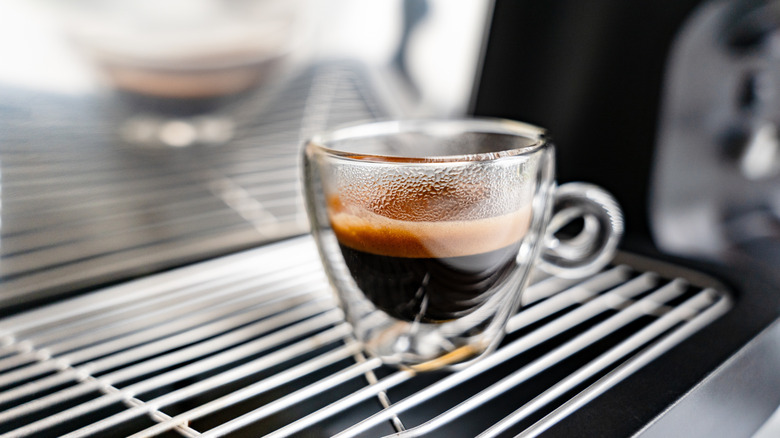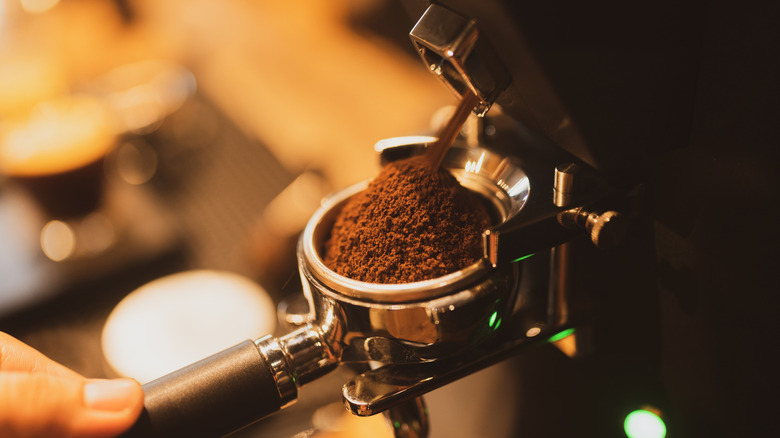How To Make Caffè Corretto: An Italian Specialty
Coffee and booze are a match made in heaven -– from an Irish coffee to your classic espresso martini — they're a combination that's been tried, tested, and certainly approved. It turns out, though, that the Italians have a way of combining the two that really puts the emphasis on appreciating the simple things: They enjoy coffee and alcohol in their natural states, without all the rigamarole of a cocktail.
To find out more, Food Republic spoke to Chris Cusack, sommelier, cicerone, and the owner of Betelgeuse Betelgeuse, in Houston, Texas. "Traditionally, adding spirits to espresso or espresso drinks (especially a cortado or traditional macchiato) is called a 'corretto,' which means 'corrected' in Italian," Cusack noted. "How's that for an endorsement? Italians love coffee and spirits together so much that they consider it the 'correct' way to drink it!" The Italians are notorious when it comes to coffee — especially the rules surrounding how you drink it (good luck trying to get a cappuccino in Italy in the afternoon), so the combination must be quite something to convince them.
When it comes to choosing what spirits to use, Cusack had some tips: "Bourbon, rum, Amari, Cognac, Brandy, Amaretto, and countless liqueurs like Galliano, Grand Marnier, Licor 43, and Tuaca are excellent with espresso." Those are all alcohols with slightly sweet, rounded, nutty undertones, making for perfect accompaniments to the similar notes in coffee — and pairing well with the brighter, bolder, chocolatey notes of espresso.
Why a caffè corretto works, and how to make one
When it comes to liquors like bourbon and rum, their strong notes of dark and milk chocolate, as well as brown sugar and oak, make for strong companions to espresso. These are warm, well-rounded flavors, and make for a caffè corretto that's well-balanced and less punchy than an espresso, with those bitter coffee flavors being mellowed out by the alcohol's natural sweetness.
Liqueurs like Amaretto, on the other hand, have a slightly brighter profile, still highlighting the coffee's nuttiness with a strong almond flavor, but bringing some zestiness to reflect the flavor of an espresso. Grand Marnier, with its distinctly citric palate, which can be quite sweet on its own, is pared down by the coffee, leaving you with a drink reminiscent of a chocolate orange candy.
When it comes to actually making a caffè corretto, proportions come down to taste – there's no real recipe beyond the shot of espresso the drink is built around. Just pull your shot, top it up with liqueur, brandy, whiskey, or rum, and you're away. Some in Italy prefer to use ristretto-style espresso, a shorter but stronger brew. Really, though, it's in your hands!


